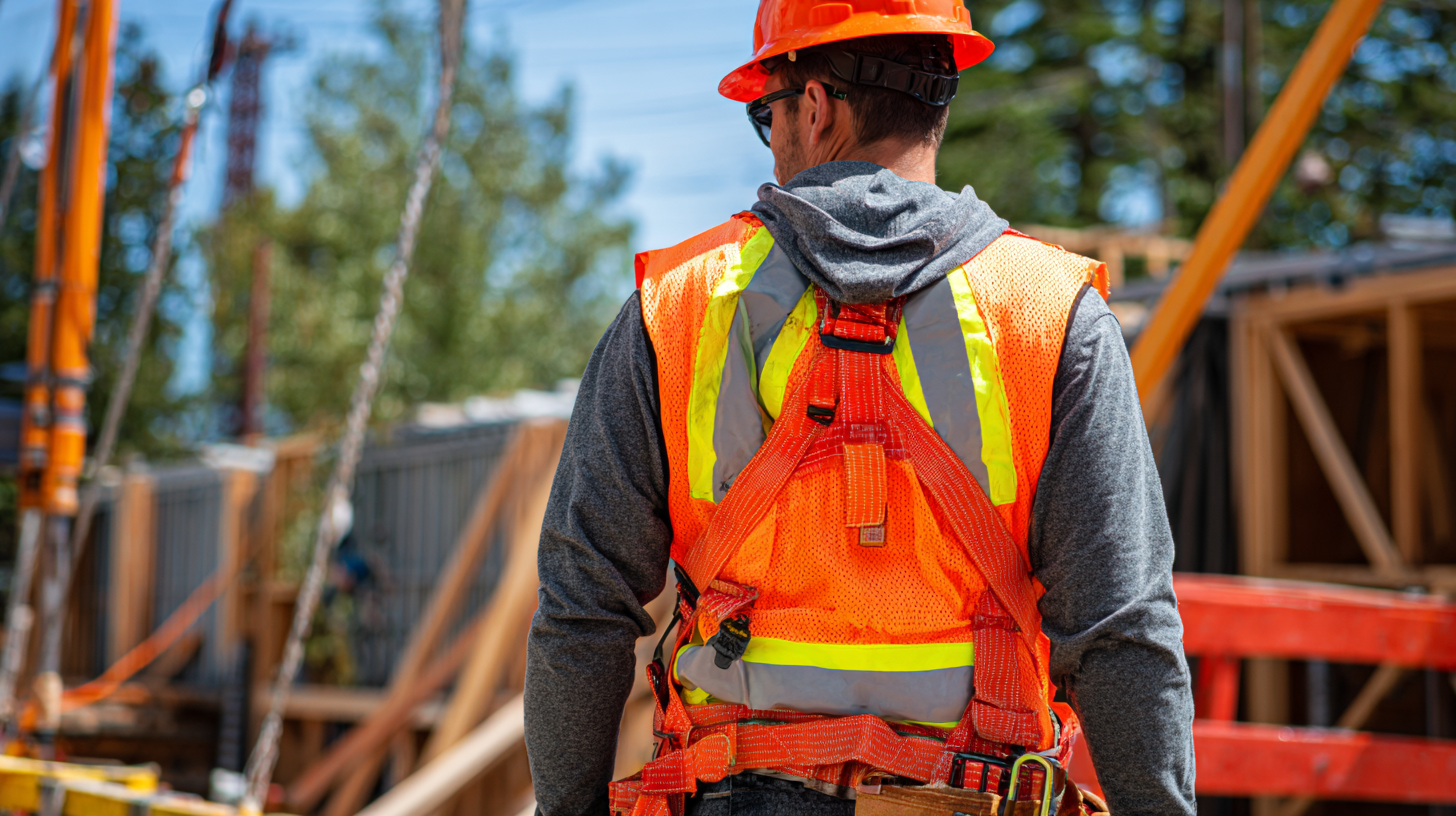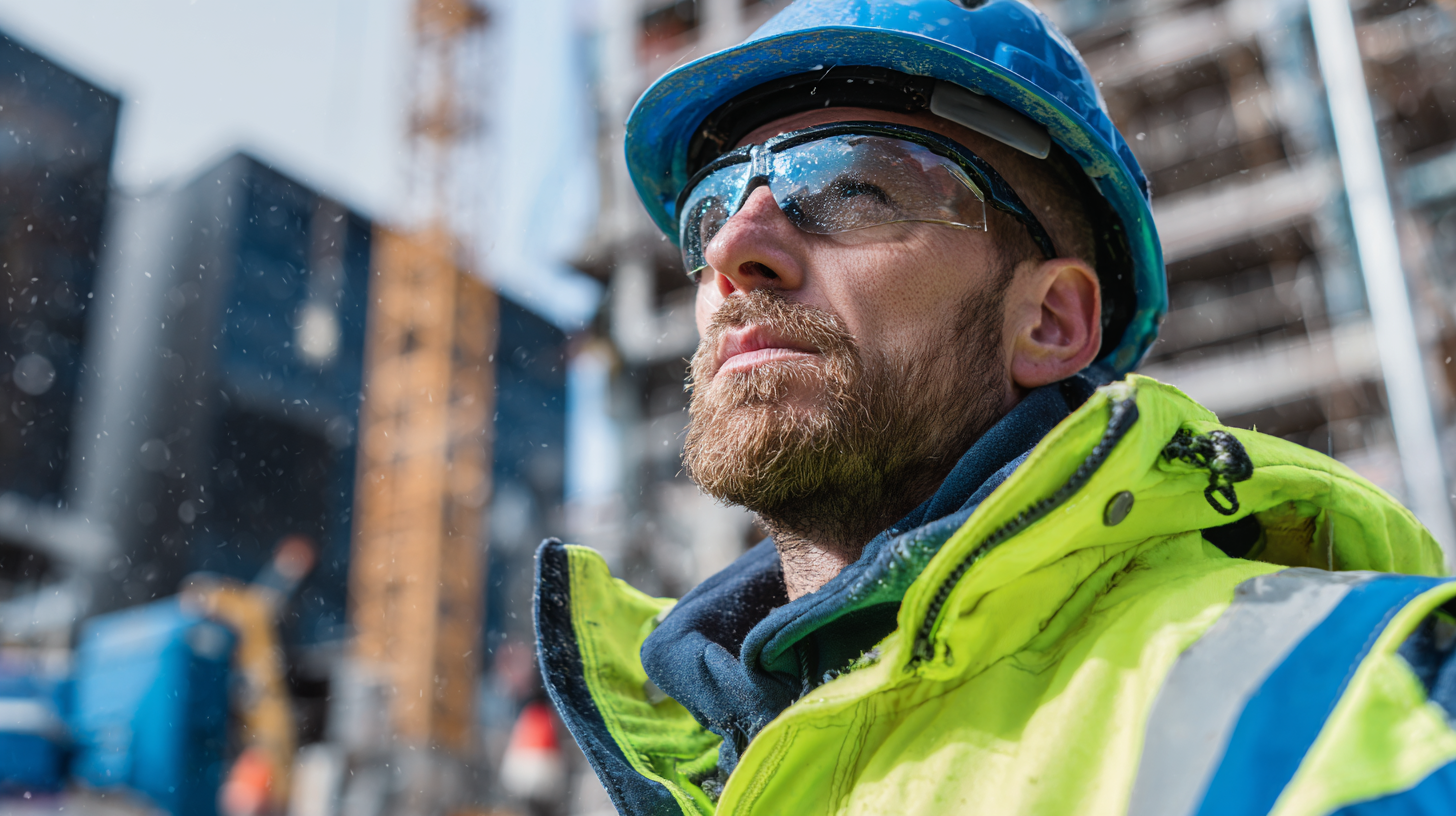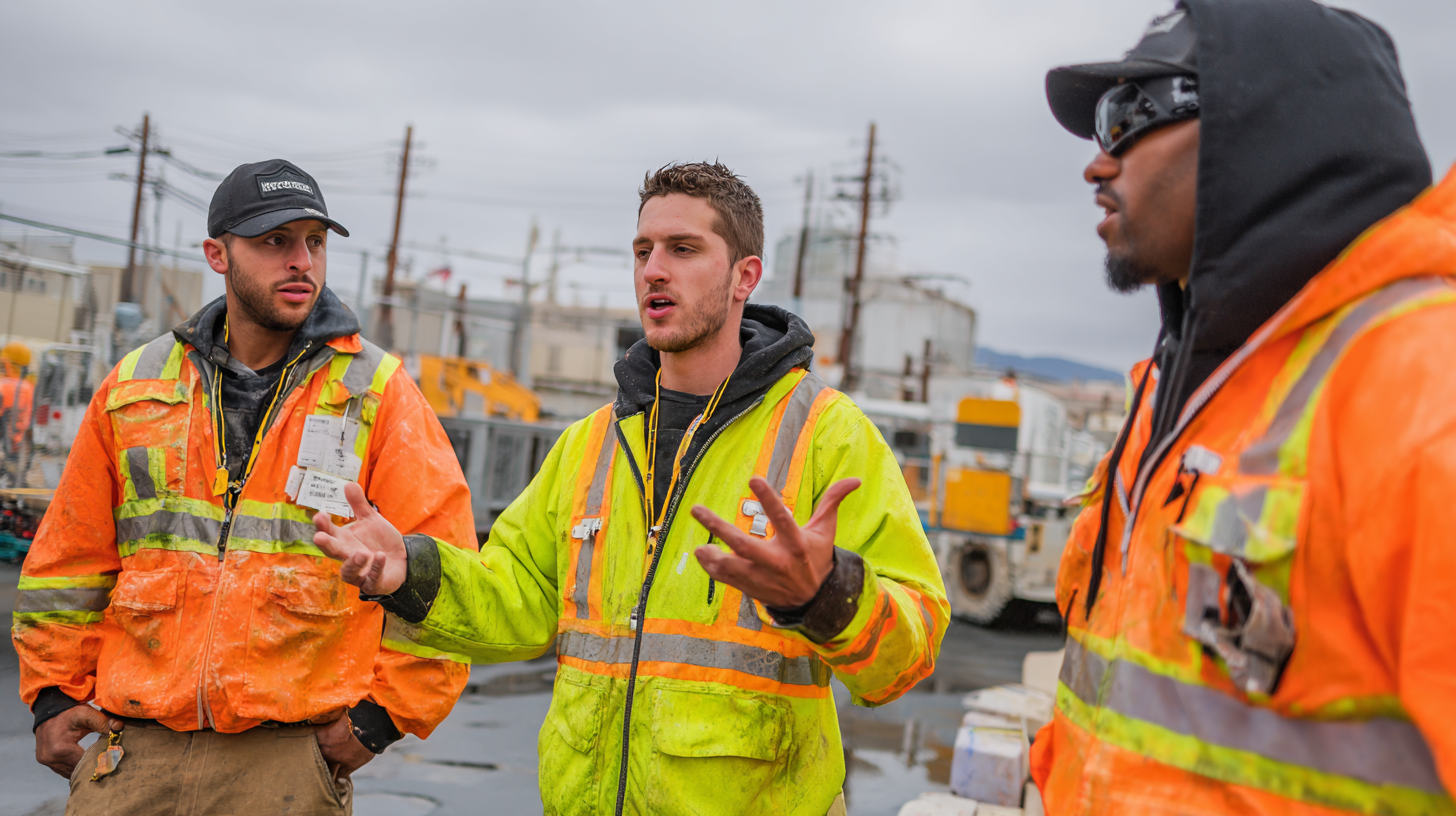 In the construction industry, safety is paramount, and the role of safety jackets is critical in enhancing visibility and ensuring worker comfort. According to the Bureau of Labor Statistics, more than 2.8 million nonfatal workplace injuries were reported in 2019, highlighting the need for effective protective gear. Safety jackets, designed with high-visibility colors and reflective materials, play a vital role in preventing accidents by making workers more noticeable in hazardous environments.
Furthermore, a study by the National Institute for Occupational Safety and Health (NIOSH) indicated that workers who wear appropriate high-visibility clothing are 30% less likely to be involved in accidents related to visibility issues. Thus, this blog will explore top strategies for selecting the best safety jackets, addressing both visibility and comfort challenges that construction workers face, ultimately aiming to enhance safety protocols on job sites.
In the construction industry, safety is paramount, and the role of safety jackets is critical in enhancing visibility and ensuring worker comfort. According to the Bureau of Labor Statistics, more than 2.8 million nonfatal workplace injuries were reported in 2019, highlighting the need for effective protective gear. Safety jackets, designed with high-visibility colors and reflective materials, play a vital role in preventing accidents by making workers more noticeable in hazardous environments.
Furthermore, a study by the National Institute for Occupational Safety and Health (NIOSH) indicated that workers who wear appropriate high-visibility clothing are 30% less likely to be involved in accidents related to visibility issues. Thus, this blog will explore top strategies for selecting the best safety jackets, addressing both visibility and comfort challenges that construction workers face, ultimately aiming to enhance safety protocols on job sites.
In today's construction industry, visibility standards are paramount for ensuring worker safety. Safety jackets play a critical role in enhancing visibility, especially in high-risk environments where heavy machinery and vehicular movement are prevalent. Recent advancements in technology, such as deep learning-based systems for automated safety helmet detection, underscore the importance of proper Personal Protective Equipment (PPE), including bright, reflective jackets. These jackets not only meet safety regulations but also contribute to reducing the likelihood of accidents by making workers more noticeable to their colleagues and equipment operators.
Furthermore, the comparative analysis of visibility standards highlights variations across different regions and industries. While some safety jackets boast high-visibility colors and retroreflective strips, others may not meet the necessary guidelines. Integrating AI frameworks into construction sites can help monitor compliance with these visibility standards, ensuring that all personnel are equipped with the right gear. This technological approach aids in identifying non-compliance in real-time, ultimately enhancing safety protocols within the construction workforce. The commitment to adopting both effective safety apparel and innovative detection systems is essential in promoting a safer working environment.
 In the construction industry, safety jackets play a crucial role in ensuring visibility and protecting workers from hazards. However, achieving the perfect balance between comfort and functionality can be challenging. When evaluating material choices for safety jackets, factors such as breathability, weight, and insulation come into play. Lightweight fabrics that promote airflow can enhance comfort, especially in environments where temperatures fluctuate. Incorporating features like adjustable straps and stretchable materials allows for greater movement, reducing fatigue during long hours on the job.
In the construction industry, safety jackets play a crucial role in ensuring visibility and protecting workers from hazards. However, achieving the perfect balance between comfort and functionality can be challenging. When evaluating material choices for safety jackets, factors such as breathability, weight, and insulation come into play. Lightweight fabrics that promote airflow can enhance comfort, especially in environments where temperatures fluctuate. Incorporating features like adjustable straps and stretchable materials allows for greater movement, reducing fatigue during long hours on the job.
Recent advancements in textile technology offer innovative solutions for safety jackets that do not compromise on safety while enhancing user experience. Materials that are waterproof and windproof, yet still allow for breathability, are particularly beneficial for outdoor construction work. Furthermore, the integration of reflective strips made from high-visibility materials ensures that workers remain seen in low-light conditions. By carefully considering these material choices, manufacturers can create safety jackets that not only meet regulatory standards but also provide comfort, thereby improving overall worker efficiency and morale on construction sites.
 In the construction industry, worker safety is paramount, and high-visibility (high-viz) jackets play a crucial role in enhancing on-site safety. According to recent statistical insights, workers who wear high-viz clothing are significantly less likely to be involved in accidents compared to those in standard apparel. Bright colors like fluorescent yellow and orange are designed to catch the eye during the day and remain visible at night, enabling easier spotting by machinery operators and fellow workers. This visibility drastically reduces the risk of collisions and injuries on busy construction sites.
In the construction industry, worker safety is paramount, and high-visibility (high-viz) jackets play a crucial role in enhancing on-site safety. According to recent statistical insights, workers who wear high-viz clothing are significantly less likely to be involved in accidents compared to those in standard apparel. Bright colors like fluorescent yellow and orange are designed to catch the eye during the day and remain visible at night, enabling easier spotting by machinery operators and fellow workers. This visibility drastically reduces the risk of collisions and injuries on busy construction sites.
Moreover, the comfort of high-viz jackets can impact their effectiveness. While visibility is essential, discomfort can lead workers to remove their jackets, inadvertently putting them at risk. Recent advancements in fabric technology have introduced lightweight, breathable materials designed to provide maximum comfort without compromising visibility. These innovations not only ensure that workers remain safe but also encourage them to adhere to safety protocols more consistently. Thus, addressing visibility while ensuring comfort is a key challenge that manufacturers are tackling to enhance worker safety in the construction sector.
When it comes to safety jackets in construction, two critical features stand at the forefront: weather resistance and breathability. A report from the Occupational Safety and Health Administration (OSHA) indicates that exposure to harsh weather conditions can lead to decreased job performance and increased risk of accidents. Therefore, safety jackets need to provide a balance between materials that can withstand rain, wind, and cold while ensuring breathability to keep the wearer comfortable during strenuous activities.
Weather-resistant materials, such as Gore-Tex and breathable membranes, have seen a surge in popularity among construction professionals. According to a market analysis by Research and Markets, the global industrial protective clothing market is projected to reach $11 billion by 2026, underscoring the demand for high-performing safety gear that offers both rain and wind protection. However, finding the right fabric blend that allows moisture and heat to escape without compromising on insulation can be challenging. A well-designed safety jacket should feature ventilation zones that promote air circulation, enhancing user comfort while meeting stringent safety standards. Balancing these two attributes remains fundamental in selecting safety jackets that cater to the diverse environments construction workers face daily.
| Feature | Detail | Advantage | Disadvantage |
|---|---|---|---|
| High Visibility | Bright colors and reflective strips | Increases safety by ensuring visibility | Can be less stylish |
| Weather Resistance | Waterproof and windproof materials | Keeps workers dry and warm | May reduce breathability |
| Breathability | Materials that allow moisture and air flow | Enhances comfort during high activity | May not offer complete weather protection |
| Insulation | Added padding and thermal materials | Keeps workers warm in cold conditions | Can be bulky and less breathable |
| Adjustable Fit | Adjustable sleeves, hoods, and waists | Provides a custom fit for better movement | May require frequent adjustments |
When it comes to selecting safety jackets in construction settings, assessing the cost-benefit ratio is crucial. The right safety jacket not only ensures visibility and comfort for workers but also provides substantial savings in the long run. Investing in a high-quality jacket might initially seem expensive, but the durability and enhanced safety features can reduce the frequency of accidents and subsequent costs, such as medical expenses and downtime. Brands that prioritize both comfort and visibility tend to have lower replacement rates, making them a smart choice.

Tips for choosing the right safety jacket include considering the material and its breathability. Opt for jackets made from lightweight, durable materials that allow air circulation while still being water-resistant. Look for jackets with reflective strips that enhance visibility without compromising comfort. Additionally, ensure that the jacket fits properly and allows for a full range of motion, as restricted movement can lead to accidents on the job site.
Another key consideration is the jacket’s thermal insulation and flexibility. Depending on the weather conditions, investing in jackets with removable linings or adjustable features can provide versatility. This way, workers can adapt to changing temperatures without sacrificing safety or comfort, ultimately leading to a more productive work environment.
